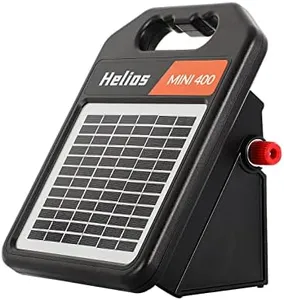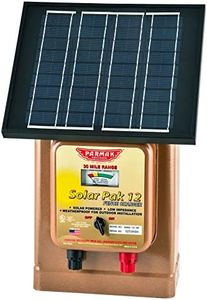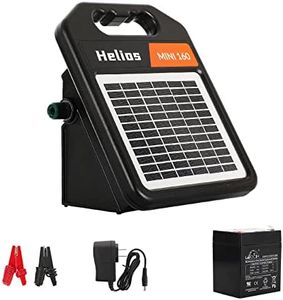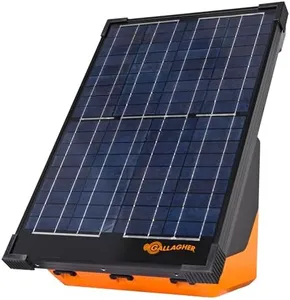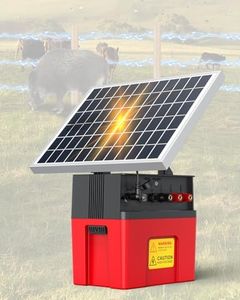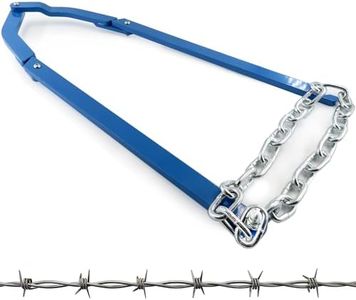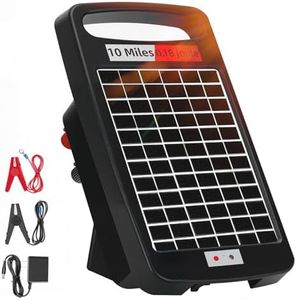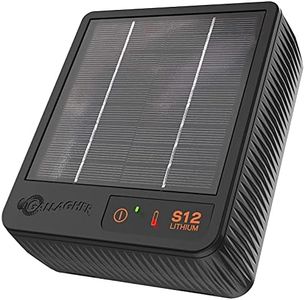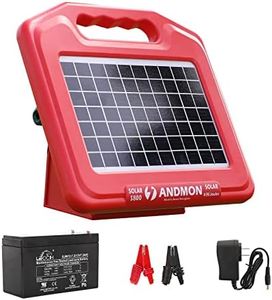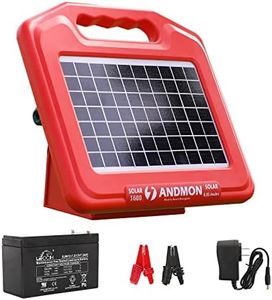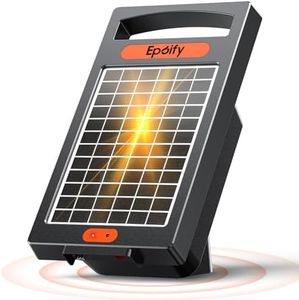10 Best Solar Fence Charger For Cattle 2025 in the United States
Our technology thoroughly searches through the online shopping world, reviewing hundreds of sites. We then process and analyze this information, updating in real-time to bring you the latest top-rated products. This way, you always get the best and most current options available.

Our Top Picks
Winner
Andmon MINI400 20 Miles Solar Electric Fence Charger with Day/Night Mode 0.3J Output Energy Electric Fence Energizer
Most important from
1127 reviews
The Andmon MINI400 solar electric fence charger is designed to power up to 20 miles of fencing, making it suitable for medium to large cattle enclosures. Its 0.3 joule output energy is on the lower side compared to some high-end models, which means it can deliver a decent but not very strong shock to keep livestock contained. The solar panel measures 190 by 161 mm, providing 18.5V and 3 watts, which is efficient enough to recharge the 12V/4.5AH sealed lead acid battery. This battery capacity allows the unit to operate for up to 14 days without sunlight, offering reliable continuous performance during cloudy weather or winter months.
The charger is built to withstand harsh weather, operating well between -20 to 80℃, and it features an IPX4-rated waterproof casing, so it can handle rain and splashes but should be sheltered from heavy water exposure. Weighing about 5.9 pounds, it’s portable but still sturdy, made with durable materials. A useful feature is the day/night mode, which helps conserve energy by adjusting output based on time of day. The charger comes with a 1-year warranty and has received good customer ratings, suggesting dependable quality.
If you need a very strong shock for large or escape-prone cattle, a higher joule rating might be preferable. Also, while the battery lasts well without sun, it uses a sealed lead acid type, which is heavier and less eco-friendly than newer lithium options. The Andmon MINI400 fits well for typical cattle fencing needs, especially if you're looking for a reliable solar-powered option that balances power, battery life, and durability at a reasonable price.
Most important from
1127 reviews
Parmak Magnum Solar-Pak 12 Low Impedance 12 Volt Battery Operated 30 Mile Range Electric Fence Charger MAG12-SP
Most important from
724 reviews
The Parmak Magnum Solar-Pak 12 is designed to offer a reliable solution for cattle farmers looking for a solar-powered electric fence charger. One of its key strengths is its impressive 30-mile range, which allows for effective containment of livestock over large pastures. The low impedance feature ensures maximum power delivery, which can help in keeping the fence effective for longer periods, especially important for those who want to avoid frequent maintenance. The 3.1+ joules output also provides sufficient energy to deter animals from breaching the fence.
Another advantage is its solar charging capability, which means it harnesses sunlight during the day, while the rechargeable 12-volt battery provides power at night. This dual power source can be particularly appealing for users in remote areas without electricity access. Additionally, its weatherproof design makes it suitable for outdoor use in various climates, increasing its durability and lifespan. However, it does have some drawbacks. The charger weighs 23 pounds, which might make it a bit cumbersome to install or relocate. While the performance is generally good, users might find the efficiency of solar charging limited on cloudy days, potentially impacting its effectiveness if the fence isn’t exposed to enough sunlight.
Most important from
724 reviews
10 Miles Solar Electric Fence Charger with Day/Night Mode, 0.11J Portable Solar Fence Charger with Rechargeable Solar Panel for 24-Hour Uninterrupted Protection Electric Fence Energizer
The Andmon 10 Miles Solar Electric Fence Charger is designed for livestock management, making it a practical option for those who need a reliable fencing solution for cattle. One of its standout features is the ability to energize up to 2 miles of fencing, which is suitable for small to medium-sized grazing areas. The compact size and portability make it easy to install in various locations, which is a significant advantage for farmers who prefer strip grazing practices.
In terms of power, the charger has a joule rating of 0.11, which may be adequate for keeping cattle contained, though it might be less effective in situations where stronger deterrence is required. Its built-in solar panels and GEL battery ensure it can operate even in low light conditions, providing a consistent power supply for 24 hours a day and up to 28 days when fully charged. Durability is another strong suit of the Andmon charger, as it is designed to withstand harsh weather, making it suitable for outdoor use. The 360-degree rotation feature allows for optimal sunlight exposure, enhancing the solar charging efficiency. However, users need to manually connect the internal battery before use, which might not be straightforward for everyone.
The relatively low joule rating means this charger might not be the best option for larger or more aggressive livestock that require a stronger electric fence. Additionally, while the unit is portable, its charging capacity may limit its effectiveness in larger farms where multiple chargers could be necessary. The Andmon Solar Electric Fence Charger is a solid choice for smaller farming operations or for those looking for an easy-to-install solution for cattle containment. Potential buyers should assess their specific needs regarding fence length and livestock behavior to determine if this product meets their requirements.
